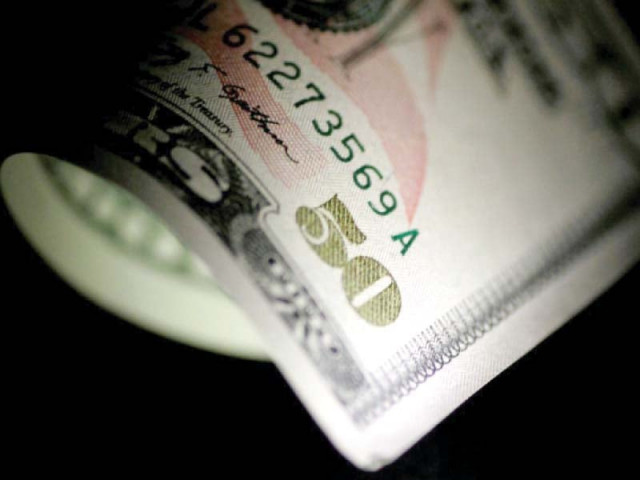Fitch affirms Pakistan’s rating
Keeps outlook stable, anticipates surge in foreign exchange reserves

Fitch Ratings has affirmed Pakistan’s long-term foreign credit rating at ‘B-’ with a stable outlook, anticipating a surge in foreign exchange reserves to a four-year high at $16 billion by June 2021 under the ongoing International Monetary Fund’s (IMF) loan programme and available Saudi Arabia’s financing.
It expects Riyadh would withdraw the remaining deposit of $2 billion from the State Bank of Pakistan’s (SBP) foreign exchange reserves on the scheduled timeline of 2022. Besides, the country has plans in place to float Eurobond and Sukuk to borrow more from the international market by December 2020, the global credit rating agency noted.
The foreign currency reserves stood at $7.7 billion about a year ago, it said.
“Fitch Ratings has maintained Pakistan’s sovereign rating at ‘B-’ with a ‘stable outlook’, which further confirms Moody’s assessment published earlier this month. Once again, this is a clear affirmation of the government’s well-considered and effective economic and financial policies in some of the most challenging circumstances in living memory created by the Covid-19 pandemic,” the finance ministry tweeted on Monday.
Fitch Ratings, in its rating action commentary on Monday, stated, “The external finances appear resilient to shock due to the authorities’ policy actions and continuing multilateral and bilateral financial support.”
It expected economic revival in FY21, expecting gross domestic product (GDP) growth of 1.2% compared to a contraction of 0.38% in FY20.
It also found Pakistan’s policy actions on the economic front like a tight monetary policy and a flexible rupee-dollar exchange rate regime very much sound.
The Covid-19 outbreak, however, prompted authorities to significantly cut the benchmark interest rate by 625 basis points to 7% to help households and businesses to cope with the pandemic. With this, the real interest rate has fallen to negative.
Moreover, the net foreign exchange reserves dropped to negative and the rupee depreciated further mainly due to panic pullout of investment by foreigners from rupee-denominated treasury bills and Pakistan Investment Bonds (PIBs) to the tune of $3 billion since the Covid-19 emergence.
The current challenges to the economy like weak public finances, large fiscal deficits, high government debt-to-GDP ratio and large external debt repayments against low foreign exchange reserves led Fitch to rate Pakistan’s long-term foreign currency issuer default rating (IDR) at ‘B-’.
“The coronavirus pandemic has exacerbated these challenges by depressing economic growth and pressuring public finances,” it said.
Pakistan may face challenges in collection of revenue in taxes and workers’ remittance may drop due to Covid-19 challenges. It, however, finds it difficult for authorities to announce a second stimulus package for individual and businesses to cope with Covid-19 challenges.
The situation may increase debt-to-GDP ratio to 90% in FY21 and expected to reduce to 85% by FY25, Fitch estimated.
The agency, however, strongly expected the country’s economic indicators to improve growing forward, as Pakistan is committed to implement the economic reform agenda under IMF loan programme.
“Foreign holdings (in T-bills/PIBs) have stabilised since then (Cvoid-19), and reserves have been restored through multilateral and bilateral disbursements. The central bank’s net forward position has increased somewhat in the past months and net reserves remain negative, even though they have narrowed,” Fitch said.
Pakistan’s current account deficit narrowed to 1.1% of GDP in FY20, from a peak of 6.1% in FY18, due mainly to import compression and lower oil prices. Fitch forecasts a slight widening of the current account deficit to 1.7% in FY21 due to a modest recovery in imports and declining remittances.
“Remittances rose unexpectedly by 7.3% in 4QFY20, but we view this as temporary and expect a decline of about 10% in FY21 due to the impact of the global economic shock on Pakistan’s overseas workers.”
External financing requirements have declined, in line with the narrowing of the current account deficit. However, the government’s external debt repayments remain high at about $10.3 billion (about 80% of current gross liquid reserves) in FY21 and $8.9 billion in FY22.
“The $3 billion in deposits at the central bank from Saudi Arabia were slated to be rolled over through 2022, but the Saudi authorities requested repayment on $1 billion of the deposits in July. In our baseline scenario, we assume the additional $2 billion will be rolled over when the respective tranches mature in December and January, but this is subject to some risk,” it said.
Access to external financing appears sufficient in the near-term to close any financing gap, underpinned by support from multilateral and bilateral creditors. “The 39-month, $6 billion IMF programme, which began in July 2019, remains in place. We expect the second review to be completed in the coming months, although it has been delayed since March, due mainly to the IMF’s willingness to facilitate the authorities’ policy focus on the coronavirus response.
“We understand that both the IMF and the government of Pakistan remain committed to the programme, which has facilitated significant financing from a range of multilateral institutions. Official bilateral and commercial bank borrowing from China has also been a key source of financing,” it said.
Published in The Express Tribune, August 18th, 2020.
Like Business on Facebook, follow @TribuneBiz on Twitter to stay informed and join in the conversation.


















COMMENTS
Comments are moderated and generally will be posted if they are on-topic and not abusive.
For more information, please see our Comments FAQ